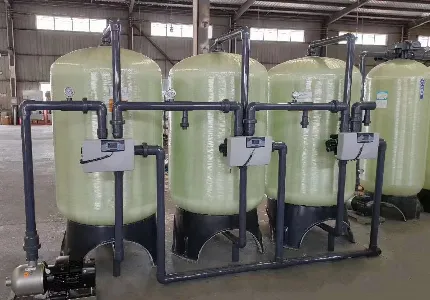loading...
- No. 9, Xingyuan South Street, Dongwaihuan Road, Zaoqiang County, Hengshui, Hebei, China
- admin@zjcomposites.com
- +86 15097380338
- Welcome to visit our website!
frp steel bar
The Role of FRP Steel Bars in Modern Construction
In recent years, the construction industry has witnessed a significant transformation driven by the demand for more durable, sustainable, and efficient materials. Among the innovations that have emerged, Fiber Reinforced Polymer (FRP) steel bars have gained prominence as a revolutionary alternative to traditional rebar. This article delves into the composition, benefits, applications, and future prospects of FRP steel bars in modern construction.
Understanding FRP Steel Bars
FRP steel bars are composite materials that consist of a polymer matrix reinforced with fibers, which can include glass, carbon, or aramid fibers. This combination results in a material that exhibits excellent strength-to-weight ratios and corrosion resistance. Unlike traditional steel, FRP bars do not rust, making them particularly suitable for environments where moisture and chemical exposure are prevalent, such as marine structures, bridges, and wastewater treatment plants.
The manufacturing process of FRP bars involves pultrusion, where continuous strands of reinforcing fiber are drawn through a resin bath and then cured in a heated die. This process allows for precise control over the properties of the final product, including its tensile strength, stiffness, and brittleness.
Advantages of FRP Steel Bars
1. Corrosion Resistance One of the most significant advantages of FRP bars is their resistance to corrosion. Traditional steel rebar can corrode when exposed to moisture and de-icing chemicals, leading to structural failures and costly repairs. In contrast, FRP bars maintain their integrity over time, reducing maintenance costs and extending the lifespan of structures.
2. Lightweight FRP bars are considerably lighter than steel rebar. This characteristic simplifies transportation and handling during construction, reducing labor costs and improving overall project efficiency. Additionally, the lightweight nature of FRP can lead to lower foundation costs, as less support is required.
3. High Strength-to-Weight Ratio Despite their lightweight quality, FRP bars provide impressive tensile strength. This allows for the design of more slender components while maintaining structural integrity, thereby enhancing the aesthetics and functionality of construction projects.
4. Thermal Insulation FRP materials possess comparable thermal insulation properties, which can contribute to energy-efficient building designs. This characteristic can help limit heat transfer and enhance overall energy performance, aligning with modern sustainability goals.
frp steel bar

5. Ease of Installation The installation process of FRP bars is straightforward. They can be easily cut and adapted to various structural designs, further contributing to their appeal in construction applications.
Applications of FRP Steel Bars
The versatility of FRP steel bars has led to their adoption in various applications across the construction industry
- Bridges Many bridge projects now utilize FRP bars to minimize the weight of the structure and improve resistance to environmental factors. Their longevity reduces the need for frequent inspections and repairs.
- Parking Structures In parking garages and decks, FRP bars help resist corrosion from salt used for ice prevention and are ideal for use in environments exposed to various chemicals.
- Concrete Structures FRP bars are being increasingly used in reinforced concrete applications to enhance durability and resist cracking.
- Marine Structures For piers, docks, and other marine constructions, FRP bars offer resistance to saltwater damage, ensuring longer-lasting infrastructure.
Future Prospects
As the construction industry continues to prioritize sustainability and innovation, the use of FRP steel bars is expected to grow. Ongoing research is focused on improving the performance and reducing the costs of FRP materials, making them more accessible to a wider range of projects. Additionally, advancements in manufacturing techniques may lead to further innovations in design and applications.
In conclusion, FRP steel bars represent a significant advancement in construction materials, offering numerous benefits over traditional rebar. Their unique properties make them an ideal choice for diverse applications, paving the way for safer, more durable, and sustainable structures in the future. As more construction professionals recognize the advantages of using FRP, it is likely that these innovative materials will play an increasingly central role in the built environment.
-
GRP Structures: The Future of Lightweight, High-Performance EngineeringNewsJun.20,2025
-
FRP Water Tank: High-Performance Storage for Corrosive and Clean Water SystemsNewsJun.20,2025
-
FRP Square Tube: The New Industry Standard for Chemical and Structural ApplicationsNewsJun.20,2025
-
FRP Pultruded Profiles: The Ultimate Choice for Lightweight Structural StrengthNewsJun.20,2025
-
FRP Handrails: The Safer, Smarter, and Stronger Choice for Modern InfrastructureNewsJun.20,2025
-
FRP Grating: The Smart Solution for Durable, Lightweight Industrial FlooringNewsJun.20,2025
-
Why Choose a Galvanized Water Tank for Your Storage NeedsNewsMay.21,2025
